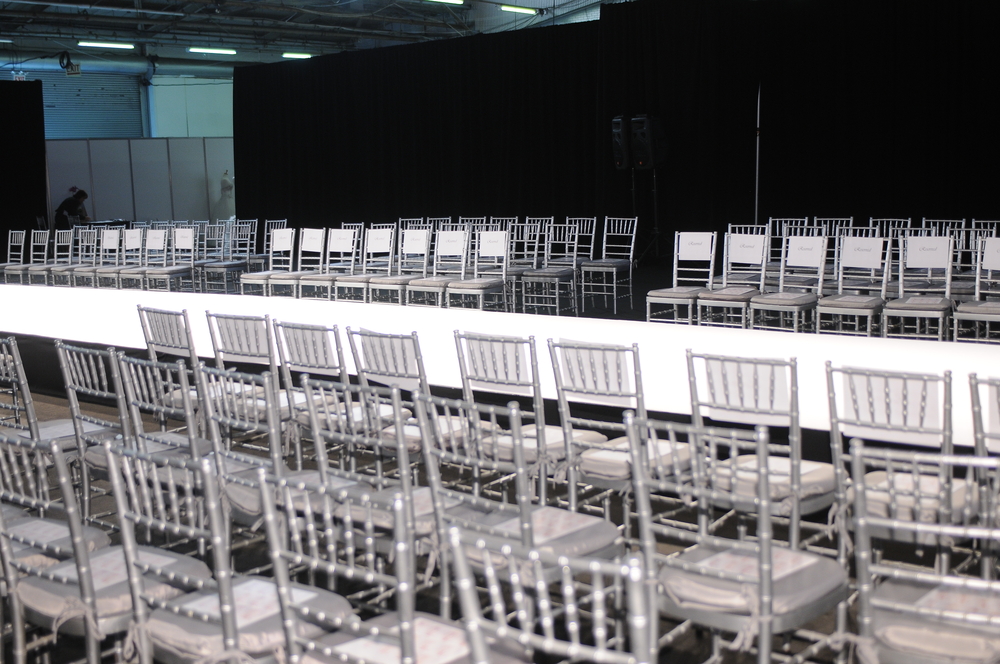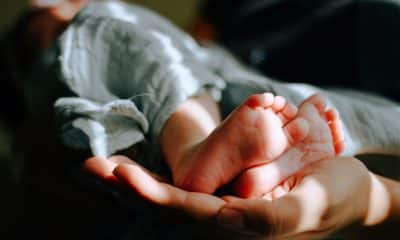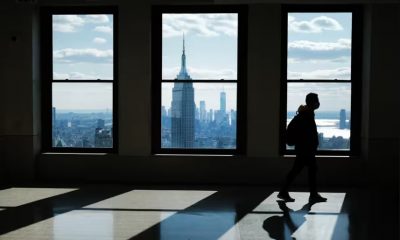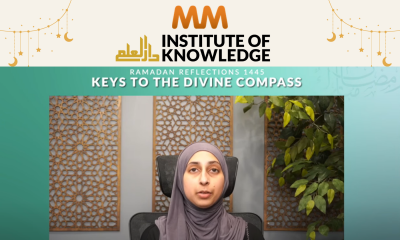Marie Claire Magazine’s article titled “10 Muslim Women Shatter Stereotypes by Showing Off Their Style” has been getting a lot of attention from Muslims on social media. While the target audience is probably a non-Muslim one, some American Muslim women have taken a critical eye to the piece and are confused by the article, wondering, “How does this shatter stereotypes about Muslim women like me?”
Keep supporting MuslimMatters for the sake of Allah
Alhamdulillah, we're at over 850 supporters. Help us get to 900 supporters this month. All it takes is a small gift from a reader like you to keep us going, for just $2 / month.
The Prophet (SAW) has taught us the best of deeds are those that done consistently, even if they are small.
Click here to support MuslimMatters with a monthly donation of $2 per month. Set it and collect blessings from Allah (swt) for the khayr you're supporting without thinking about it.
But what stereotypes about Muslim women do Americans hold that need shattering in the first place? The article’s tagline claims that these women’s fashion sense “[banishes] the idea of the oppressed Muslim woman.” The article further claims that these women, “stand up for their autonomy every time they get dressed.” There isn’t much expository substance other than that in this article, and I fail to see the connecting thread between all ten of the women featured, besides that they are “fashionable.” What does being “well-dressed” have to do with shattering the stereotype of the oppressed Muslim woman? Are being “oppressed” and “unfashionable” synonymous, while being “independent” and “fashionable” synonymous here? Are these notions of oppression and a lack of agency being oddly conflated with Muslim women observing a “traditional” or “conservative” Islamic dress code, or lack thereof?
The major reason why this article is making a splash in social media within American Muslim circles is that the author, an American Muslim fashion blogger herself, is trapped into taking on the burden of representation for all Muslims. This happens by the mere virtue of her being an American Muslim writing in a country in which “whiteness” is the invisible ruler against which all minorities are measured. (There would be a whole slew of other potential problems if the author of this post was not an American Muslim woman). What ends up happening is that it seems as if the author is given a megaphone and allowed to speak on behalf of all Muslim women in the United States and beyond, and so, it would inevitably cause a fuss online.
I don’t really see what this article is trying to do, and I wouldn’t have even found it of much relevance to me personally if it weren’t for the unfortunate stab taken at stereotypes of Muslim women. This article strays from its designated context of fashion magazine and hints at a sociopolitical message. It would have been so much better to simply title this post as “10 Muslim Women Showing Off Their Style” or “10 Muslim Fashionistas to Follow,” and just left it at that. Because this article throws itself into an agenda concerned with more than just different philosophies of putting together an outfit, other Muslim women feel implicated in what is being said.
Moving on to more important issues, I want to find out where Nafisa Rahman got that blue and yellow dress…














Daniel Haqiqatjou
July 27, 2015 at 6:30 PM
I remember when this site got a lot of attention by the Muslim internet community 5 years ago: http://muslimswearingthings.tumblr.com/
“See! Muslims aren’t wackos. They dress just like normal people!”
Shiba
July 27, 2015 at 6:36 PM
‘Moving on to more important issues, I want to find out where Nafisa Rahman got that blue and yellow dress…’
Meena, if you get to know it, please share the info with all of us too! ;))
Meena Malik
July 27, 2015 at 9:38 PM
Seriously, I am gonna try to find it. And if it is too expensive, I am gonna remember it and see if I can’t find fabric close to it and sweet talk my mom into trying to sew one for me :)
whatttt
July 27, 2015 at 6:37 PM
What a silly article designed for an unknowing audience’s consumption.
For example, I’m pretty sure Wahbe is a Lebanese Christian, not a Muslim.
Pingback: MuslimMatters: Marie Claire should stay out of sociopolitics - altM
Hyde
July 27, 2015 at 8:15 PM
It’s funny how in the west there is absurd obsession ‘Muslim women’. No matter what a girl does or does not do, if she a is a Muslim, it seems to make headlines. There is still this post modern oriental fetish going on here.
On the contrary the only time a Muslim guy makes headline, is either if he is a homosexual or if he being picked up by the FBI. How strange.
Aple
July 28, 2015 at 12:46 AM
I was waiting pls the answer of my question
Khadija Anderson
July 28, 2015 at 2:48 PM
Your op-Ed piece is doing exactly what you are claiming the article is doing. There are many MANY Muslimahs who don’t wear the hijab and dress fashionably. Get over it.
Shiba
July 28, 2015 at 3:20 PM
@Khadija, I guess you missed the whole point.
When you say ‘There are many MANY Muslimahs who don’t wear the hijab and dress fashionably’ — does it break any stereotypes ( as Marie Claire Magazine claims!)
Thank you but it does not and you are one of the many who say so ;))
Meena Malik
August 4, 2015 at 10:33 AM
But the point of this article is not to dispel the idea that Muslim women don’t wear hijab and that they are also capable of dressing fashionably, the stereotype is that Muslim women are being oppressed.
One of the things that I actually truly appreciated about this article is that it didn’t equate “Muslim fashion” to “hijab fashion,” which I see a lot.
JDsg
July 28, 2015 at 8:28 PM
1) Regarding the article’s title, it’s quite possible that a magazine editor came up with the title instead of the author. Something to consider.
2) Regarding Muslimahs who “shatter stereotypes” by dressing fashionably without wearing a hijab: Umm, no. These women simply look like any other woman, Muslim or non, who don’t cover but dress nicely. That’s not shattering stereotypes, that’s conforming to non-Muslim society’s status quo. The only two women in the article who could claim to shatter any stereotypes were the two women who wore hijab.
Meena Malik
August 4, 2015 at 10:34 AM
Yes, it could have been an editorial decision.
Zainab
July 29, 2015 at 7:13 AM
In regards to the fashion magazines article, it is clearly evident that they don’t know the definition of Muslim. However, they have made a valid point. I strongly believe – considering today’s generation – that the way someone dresses reflects their personality to an extent. [us] Muslim women have broken the internet in the most positive way and we have used globalization to our full advantage, and if we were too look at an academic perspective, the perfect example would be Tawakkol Karman. However, some women don’t like the political side of things, and choose to break the oppression Muslim women notion with a different cause, considering the constant ‘hijabi’ pages, which are mostly on Instagram. In which i believe is great. What better way to show the world, how fashion and modesty can still mix? @amenaofficial also known as pearl daisy is a Muslim Woman who wears the hijab, and is a fashion blogger. I would love to know which westerner would call her oppressed after looking at her page? I am sure only a maniac would. The magazine is not suppose to shatter all stereotypes, and it wasn’t covering all forms of stereotypes made against Muslim women, but it happily brought light to the issue of ‘subjugated’ Muslim women and i personally think that is awesome.
I can definitely see where you are coming from, and why you are aggravated by the article as a whole, But if we were to look at it from a wider perspective it does have some sort of pros.
I would disagree with a few of the figures they used as “Muslim” women. I believe that some of the females posted on the article are just deluded by the western idea of fashion eg; Haifa Wehbe.
Great Read. Love the site. Salams.
Meena Malik
August 4, 2015 at 10:39 AM
This article was specifically addressing the viewpoint that Muslim women would have on this article after seeing it. I wonder how non-Muslims who read Marie Claire would feel about the original article. From a Muslim vantage point, I find there are a handful of problems with this article, for instance, there are only women featured from Desi, Arab, and Persian ethnic backgrounds. That seems to further support the stereotype that all Muslims look a certain way.
The post did have some high points, though :)
Hue Man
July 30, 2015 at 12:52 PM
When will society graduate to a level of appreciating the knowledge and intellect of a woman? When will we begin posting pictures of women who are liberated enough to speak with their minds, not their bodies? How is wearing less clothing or fashionable clothing synonymous to being liberated? Finally, when will we wake up and realize that to be liberated, truly, is to be liberated from the rule of man, to be elevated to the rule of God.
M.S.
July 31, 2015 at 11:57 AM
I think it was an African American comedian who once said, ‘the black man is the most copied man on the planet.’ For the African American community, 200+ years of cruel merciless slavery turned in another 100 years of forced servitude & vile discrimination, which in turn gave way to 50+ years of copying, rebranding, marketing and reproducing every aspect of their heritage, culture, language, their arts, and their cuisine etc into saleable products. Products that contributed much wealth & prosperity to many. The exploitation never really stopped if you think about it. Strange how the world is!
I think this hip, modern, “liberated” media, just want something new & different to sing-kumbaya-along-with; and I see them desperately grabbing for the Muslim women’s attention, their dress, their style and Hijab as the new must have “black dress”. (Other disgusting imbeciles with agendas have found a way to scapegoat the Muslim women’s Hijab as the “new enemy” of modernism and even sometimes the State. If you think about it, both have the same flavor of exploitation in them. Albeit one is more sinister than the other.) Everyone among the fashionistas, from east to west, is hinting at the “new Muslim cool” but no one is actually saying it outright. Everyone among the fashionistas, is waiting for that high-level fashion editor or magazine guru, to straight-up come out and say it. It sort of looks like the accountants and the economic metric guys haven’t thrown in their hat into the ring, just yet. But in due time, I think we will see it. It’s almost like the introduction of toothbrush and the soap, which took medieval Europe by storm, after a few explorers introduced it to the continent. Strange how the globalized world is!
But we have to thank Allah azah wa jal and say alhamdulilAllah, Islam is a faith and a belief system with it’s main purpose being connecting one to their Creator. And the Muslim woman’s Hijab is not just some fashion-forward (or conversely, an oppressive) symbolic tool. It is and will always remain something unique and extraordinary connecting believing women to her Creator. I hope the Muslim woman’s message will always say something along the lines of, “O’ Allah, I accept the call, I am a believed woman, my beauty, my body, and my awrah is not for anyone to exploit, use, or misuse, and it is my choice to choose modesty over other lifestyles.”
Hijabi sisters, don’t despair or get the caught with the kumbaya-singers, very soon, you will most likely become the most copied women on the planet.
Just a few cents I had to drop.
Wa salaamu aleykum
Meena Malik
August 4, 2015 at 10:43 AM
“It is and will always remain something unique and extraordinary connecting believing women to her Creator.” I love this, and couldn’t agree more!
Also, I think you would love the book “Black Star, Crescent Moon” written by Sohail Daulatzai!
Sameena K. Mughal
August 3, 2015 at 8:07 PM
I’m not sure why you took such exception to this article. Many times, the portrayal of Muslims is very one-sided. We’re either terrorists or suffering, oppressed women. The Marie Claire article sought to counter that image within its context: lifestyle and fashion.
The writer presented diverse fashion styles and opinions on what it means to be Muslim from diverse Muslim women. To me, it was addressing how these women shatter stereotypes by just being who they are. The whole point was to present a different perspective on what it means to be Muslim, again within the context of the magazine. It’s not U.S. News and World Report or Time.
We should be applauding the various depictions of what it means to be Muslim whether we agree or disagree with those depictions. Further, we should appreciate those in the media who try to show our different sides and attempt to tear down the one-note image, not criticize them.
Meena Malik
August 4, 2015 at 10:57 AM
It is not about agreeing with the depictions of Muslims given in the original post. How people practice their Islam is up to them, and I believe my responsibility of taking postive action and avoiding negative action is pretty much limited to my community.
Yes, you are right that this post presents different ways to look at Muslims from what is portrayed by news agencies, but then again, I would see no reason for a mainstream fashion magazine in the States to do a spread of burqa fashion in Afghanistan. The problem is that the underlying message of the article seems to be that these women are breaking stereotypes. It is odd for a Muslim woman to break stereotypes about how her body is policed by hijab by either dressing fashionably with hijab or by dressing fashionably without it. It boils down to essentializing the Muslim woman down to her body. So, another stereotype could be formed from this, that Muslim women are either fashionable or oppressed and unfashionable.
Another stereotype that is portrayed in news media is that all Muslims are Arab or Arab-looking. This article presented women who all fall into that ethnic category. I didn’t see a single African, African-American, Latino, European, East Asian, Central Asian, or Asian Island Muslim in this article. What about that stereotype?
It becomes a challenge when we as Muslims are given the burden of breaking stereotypes. We shouldn’t have to, and we should, quite frankly, refuse to. We are individuals and we should not be sensationalized into one homogeneous, monolithic group. We don’t think that all white people are the same, and if we try to speak out and say “Muslims aren’t like that, we are like this,” we are backing ourselves into a hole and furthering the same stereotypes that are about us or by creating new stereotypes.